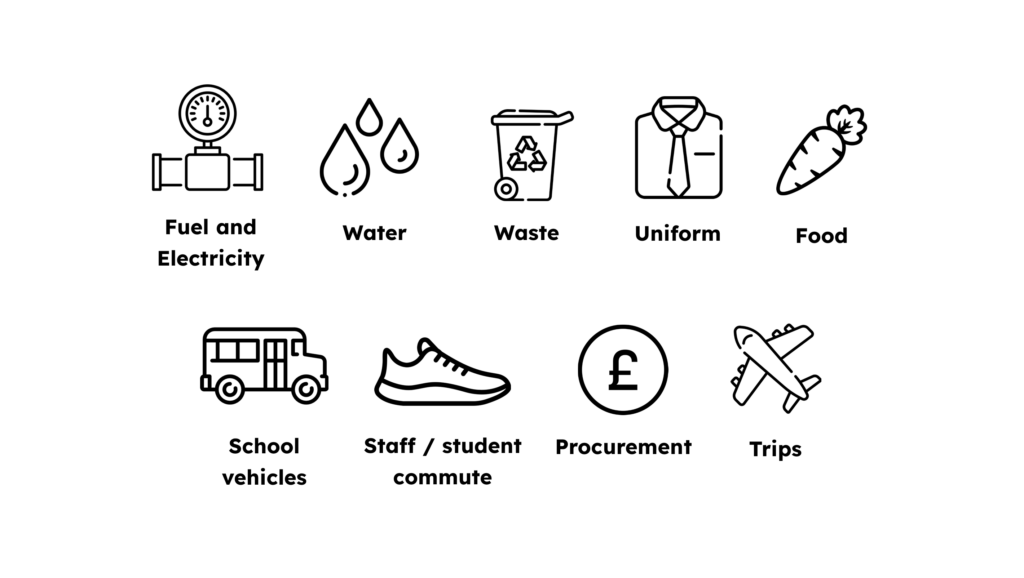The Count Your Carbon Methodology
Count Your Carbon is brought to you by Keep Britain Tidy and Eco-Schools England in partnership with Let’s Go Zero and Arete Zero Carbon, one of the UK’s leading Net Zero strategists.
It is based on the best-practice model used globally by businesses to track their emissions: the Greenhouse Gas (GHG) Protocol, and has been tailored to educational settings.
The GHG Protocol sets out three ‘scopes’ or ways of categorising the different kinds of emissions that a business (or school) creates in its own operations and in its wider ‘value chain’ (its suppliers and customers).
Emissions categories
Operational Emissions
These emissions are referred to as ‘Scope 1 & 2’ emissions, based on the GHG protocol. They occur in your school’s operations and include the direct emissions from the fuel you use in buildings and vehicles and indirect emissions from the electricity you buy.
Value Chain Emissions
Scope 3 emissions occur as a result of everything else that takes place in your school, from the products you buy for students to use, i.e. laptops, notebooks, to the emissions from students and staff travel.

Count Your Carbon asks users a series of questions which generate a bespoke carbon footprint. Throughout the questions, results and recommendations sections, the source of carbon emissions are broken down into four categories, adapted from the scopes of the GHG protocol:
- Energy
- Transport
- Food
- Purchases
During the development of Count Your Carbon, time was spent researching and collecting benchmark data from settings. Our team, including data scientists, considered the unique challenges faced by schools. Averages are modelled on five setting ‘types,’ allowing for differences to be accounted for in the carbon calculation;
- Early years/ nursery
- Primary
- Secondary
- All through
- SEN / PRU settings
Our research showed that being able to gather all the information needed to assess a setting’s carbon footprint may be a barrier for some, and so thousands of pieces of data have been used to create in-built averages for each question. This allows users who may not have access to certain information to opt for an ‘average’ .